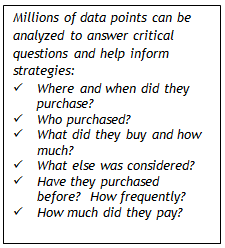Beyond the SMART Goal
By Laura Iles - Sr. Consultant, Integrated Insight
Setting SMART goals is a cliché by now. The lure of a
Specific, Measurable, Attainable, Relevant Goal
- so easy to check off when accomplished! – is great. As companies engage in annual goal-setting
exercises for each employee, the SMART Goal is a simple method of providing
direction and evaluating performance.
SMART is a good start, but it isn’t enough. For leaders
setting goals on behalf of their team, or guiding employees in their own goal
setting exercises, adding four other considerations to the mix will improve
engagement and performance, in turn driving company success.
Focus
As goals are developed, it is tempting to fill our schedules
with these delightfully quantifiable targets. Yet, time and energy are finite
resources, and there will always be unanticipated challenges or opportunities
requiring our attention.
We achieve success by defining only the most critical goals
and sharpening our focus. By limiting the sheer quantity, you increase the
likelihood of succeeding in the objectives you do set, while leaving space to
address the unexpected.
Before defining the crucial goals for individual employees, it
is imperative that executive leadership provide direction by performing the
same task for the company as a whole. When management does not prioritize,
employees and departments are faced with the impossible mission of “doing it
all."
This scattershot approach leads to overwhelming and wasted efforts
as teams diffuse their energy across too many objectives. Conversely, a firm
that selects a few specific targets enhances the likelihood of success by
allowing departments to concentrate their resources where they are most needed.
On a company-wide and an individual level, this exercise in clarity
forces leaders to precisely define success. When you strip away the extraneous,
what does success truly look like? People and companies both succeed by
limiting their focus and executing on core competencies. Always ask yourself,
is this the best use of time?
Respect the law of
diminishing returns.
One approach to enhancing focus is to think about potential
goals within the context of diminishing marginal returns. While a goal may be
relevant, think strategically about its position within the context of the
overarching business strategy. What is the relative importance to the business,
and what opportunity costs will you incur as a result?
Given the length of time it will take your employee to
achieve that goal, and the resources required to achieve and maintain that
higher level of performance, ask yourself honestly: is it worth it?
There comes a point when the returns from your improvements
begin to diminish. If you consistently reach 97% customer satisfaction, the
next 0.5% may drive less value than the resources your team will expend to
achieve it.
We all know this intellectually, yet it’s so enticing to seize
the opportunity to improve the values on the dashboard, rather than taking on the
more useful, but less easily-quantified project. Bragging rights over
continuous improvement aside, is this goal worth your team’s time, or is there
a greater use for their focus?
If you don’t know the answer to that question, consider
moving forward with a set date to review resource investment and assess relative
benefits. Leave yourself open to letting go of goals that prove to embody
diminishing marginal returns.
Which brings us to the third criterion for goal setting:
Be Flexible
Flexibility includes opportunities for course corrections
throughout the year, as well as recognizing accomplishments that occur outside
the rigid framework of established goals.
Do you have a procedure in place for restructuring goals after
the initial development process? If not, why not? Existing projects take longer
than expected, new projects are brought to life, critical projects become less so
as customers shift their goals. As a
leader, it is your responsibility to guide your employees in reprioritizing
their goals.
Further, if a previous objective is dropped, or an employee
takes on an additional project, have you developed a method for acknowledging the
work accomplished? Achievement of set goals is one method for evaluation, but strong
leaders are flexible enough to recognize and reward achievements attained outside of these goals. To do otherwise is to risk creating a culture
where employees are discouraged from going the extra mile.
Align Objectives
The fourth stumbling block is incompatibility of objectives
from one individual or department to the next.
When employee goals are in opposition to one another, progress
stalls. If one department’s “success” depends primarily on cutting costs, the
other department’s on improving performance, a project that spans the two
departments is doomed to mediocrity at best.
Eventually a leader will step in and make an executive
decision regarding the direction the project will take, but this often requires
one team to sacrifice their goals. The company loses the benefits that true
collaboration might have brought, the employees feel penalized for circumstances
outside their control, and the relationship between departments sours.
Achieving an individual goal at the expense of a project’s
success is a small-scale version of what happens when firms chase quarterly
goals to appease shareholders, at the expense of the long-term health of the
company.
As a leader, it is your responsibility to ensure you are not
placing your employees in the position of choosing between a good performance
review and doing what’s right for the company. Proactive communication to
negotiate differences and ensure aligned objectives can mitigate these all too common
situations.
Achieve Success
Goal setting is a critical method to cultivate focus and
drive improvements, but simply setting SMART goals isn’t sufficient. For the
employee and the company to thrive, individual goals must be considered within
the broader context of the company culture and objectives, and flexible enough
to respond to changing situations.

